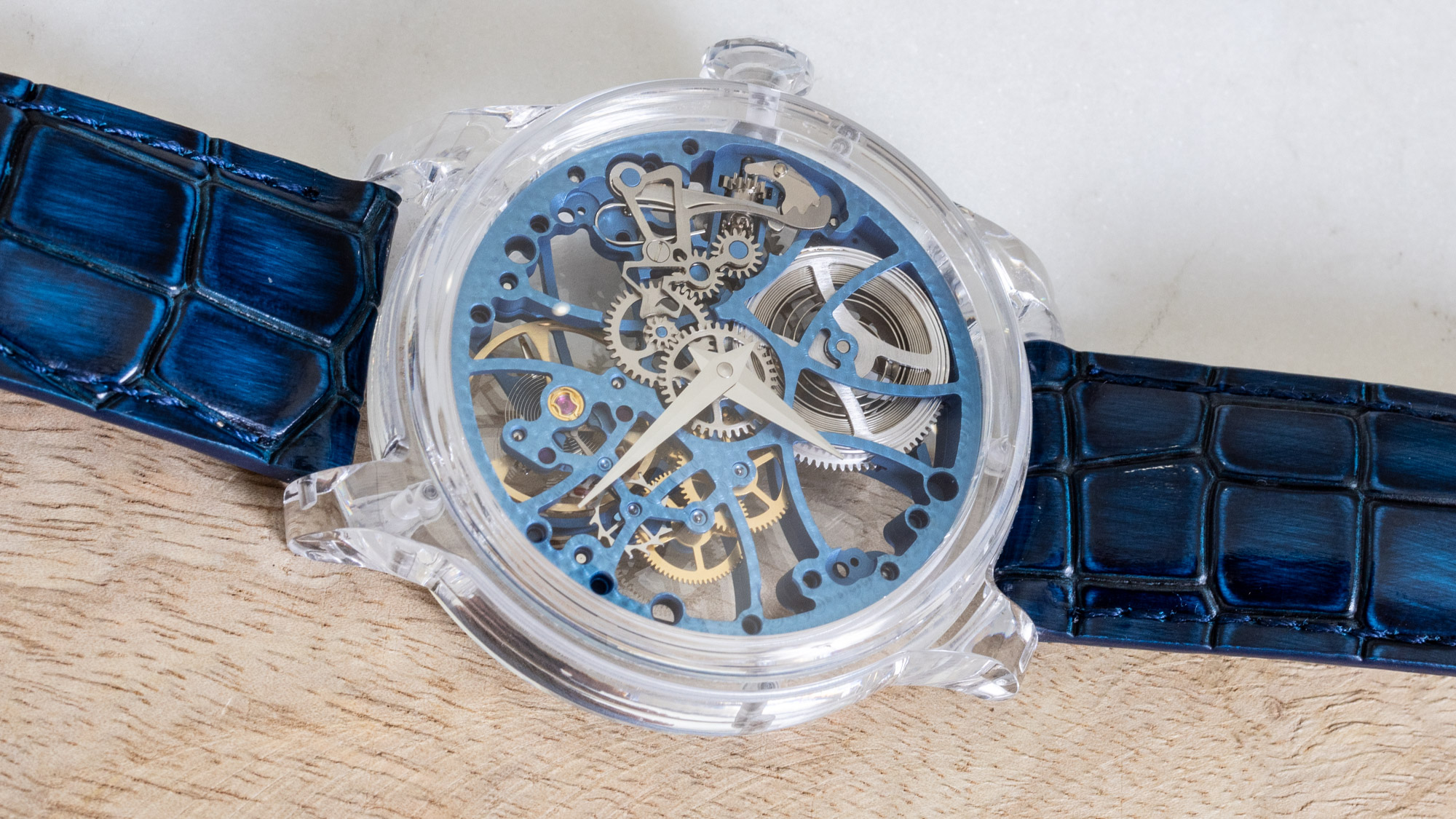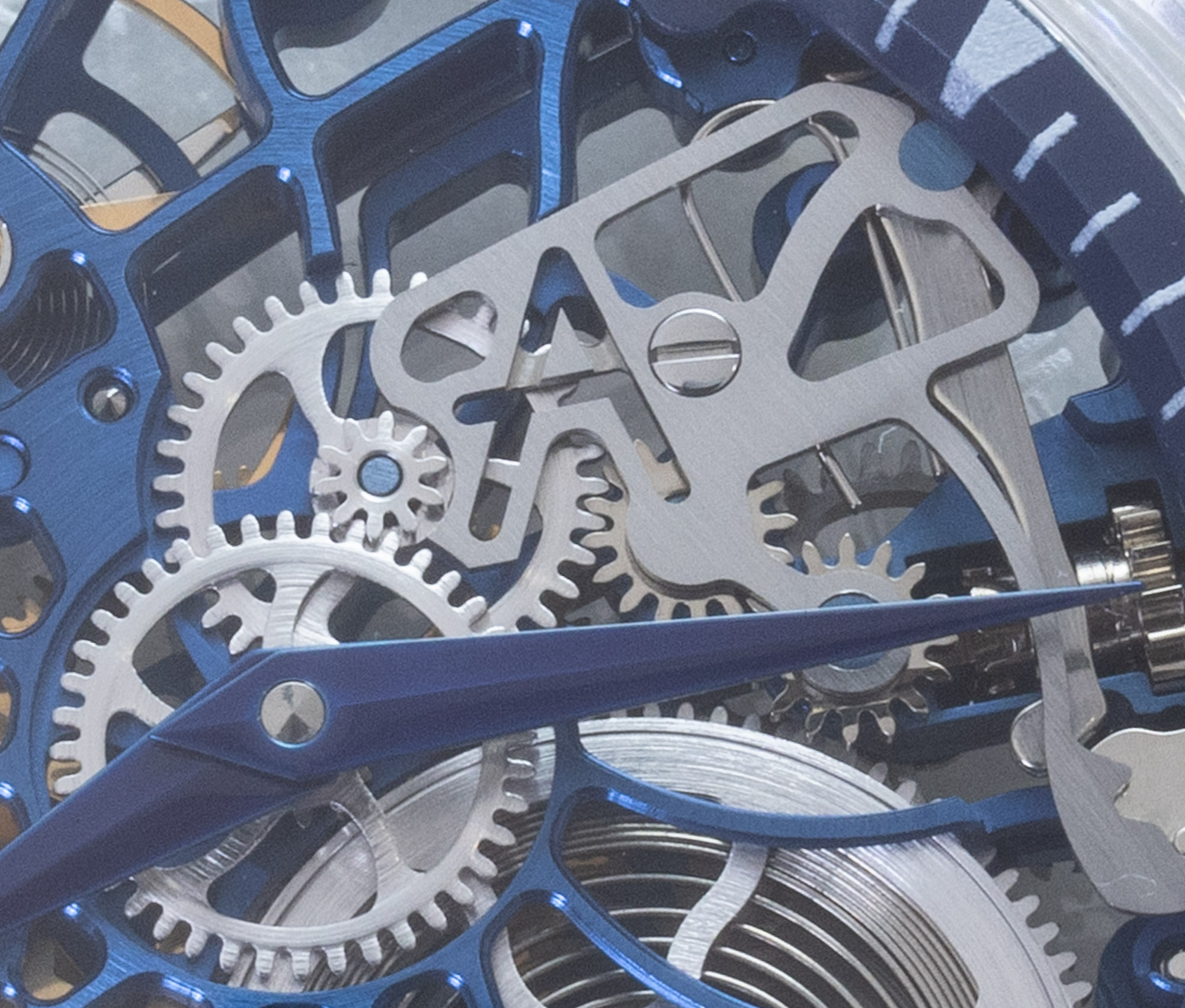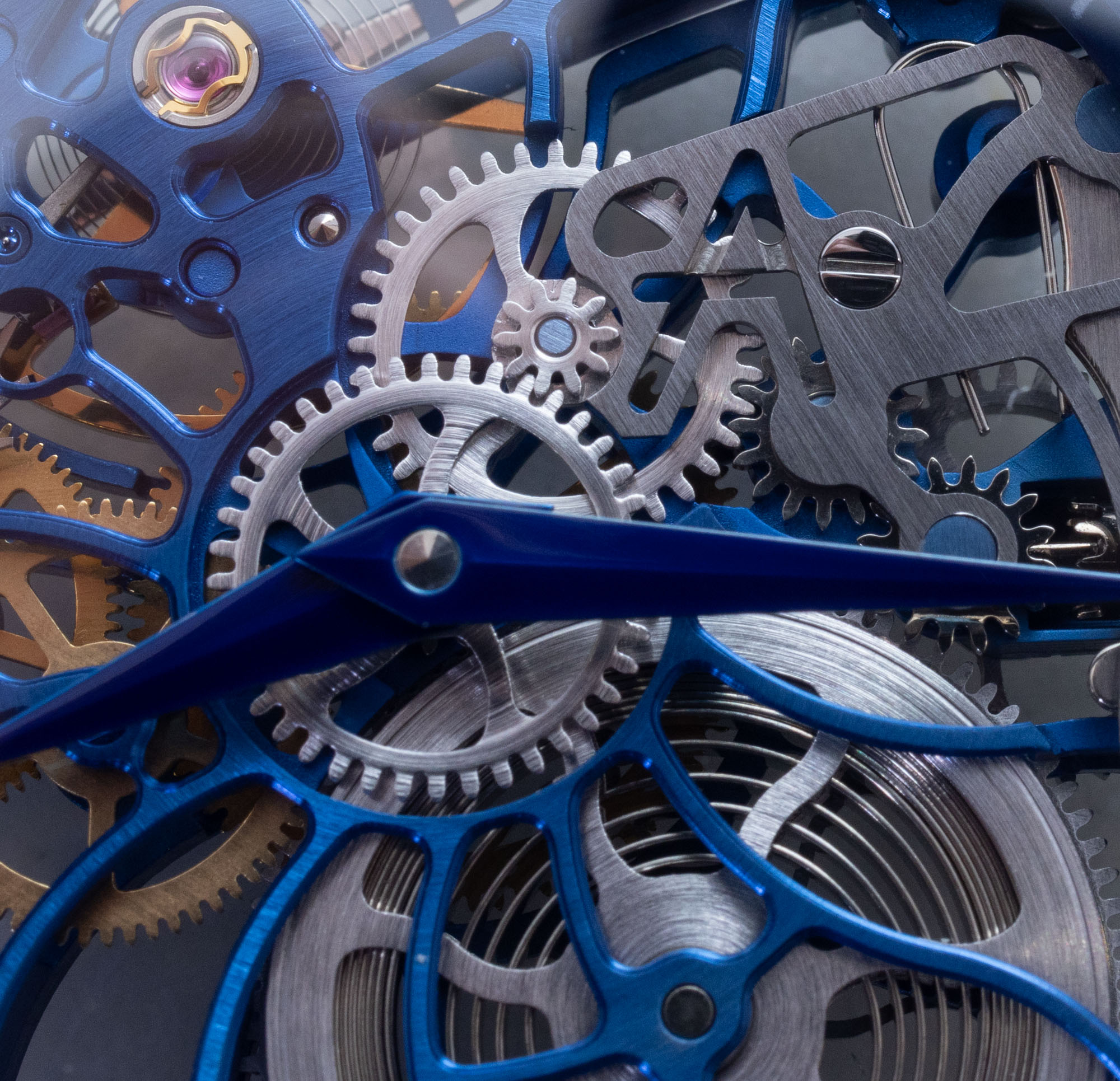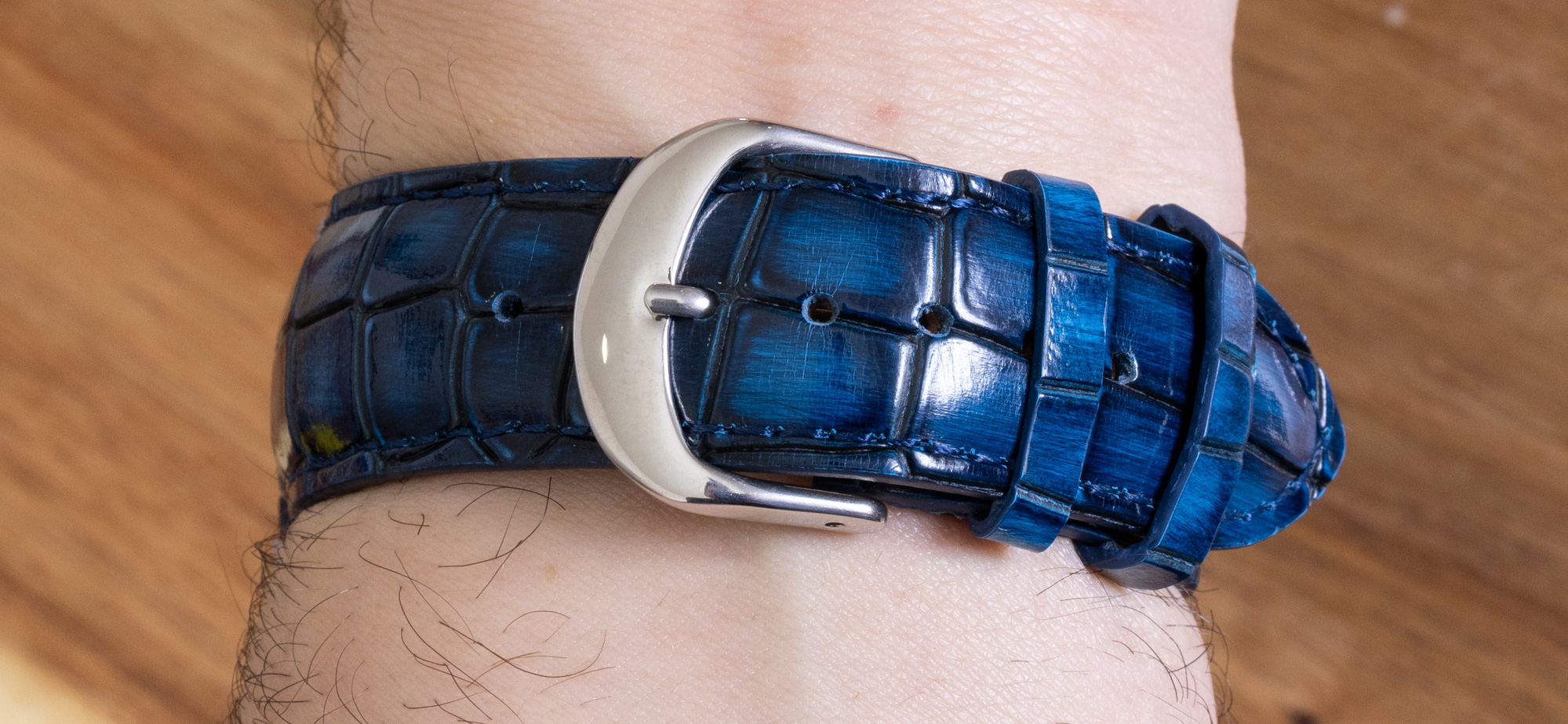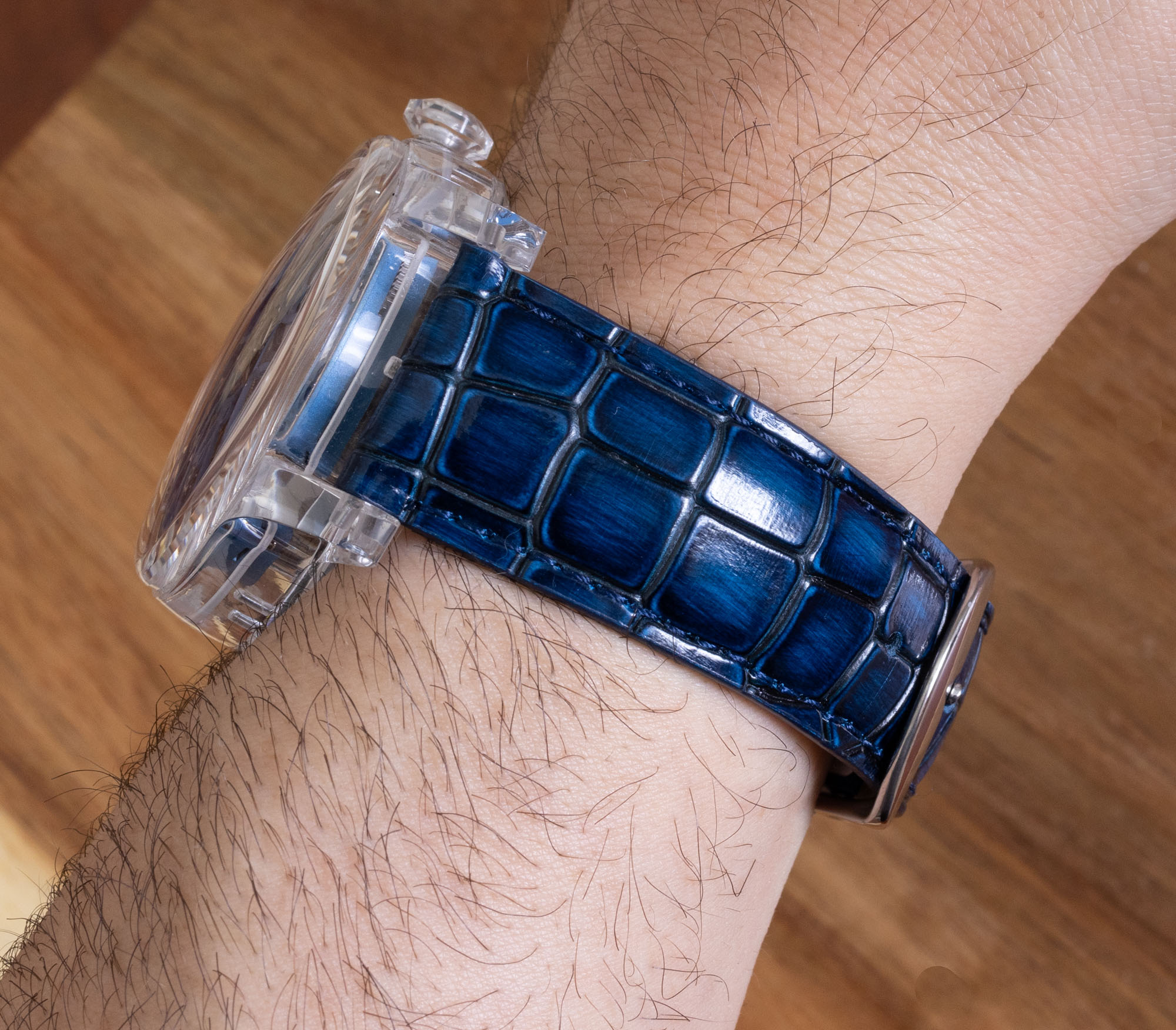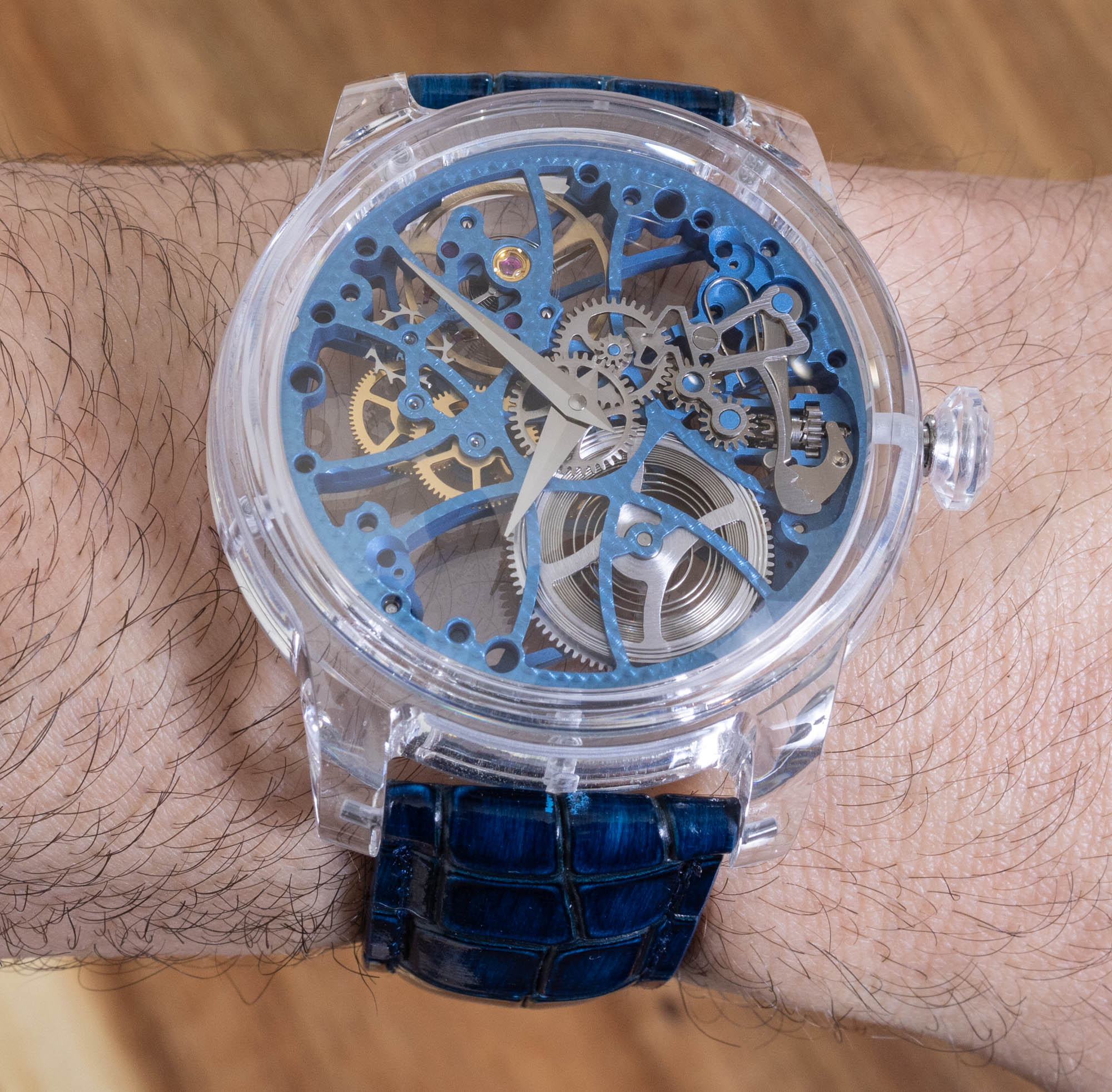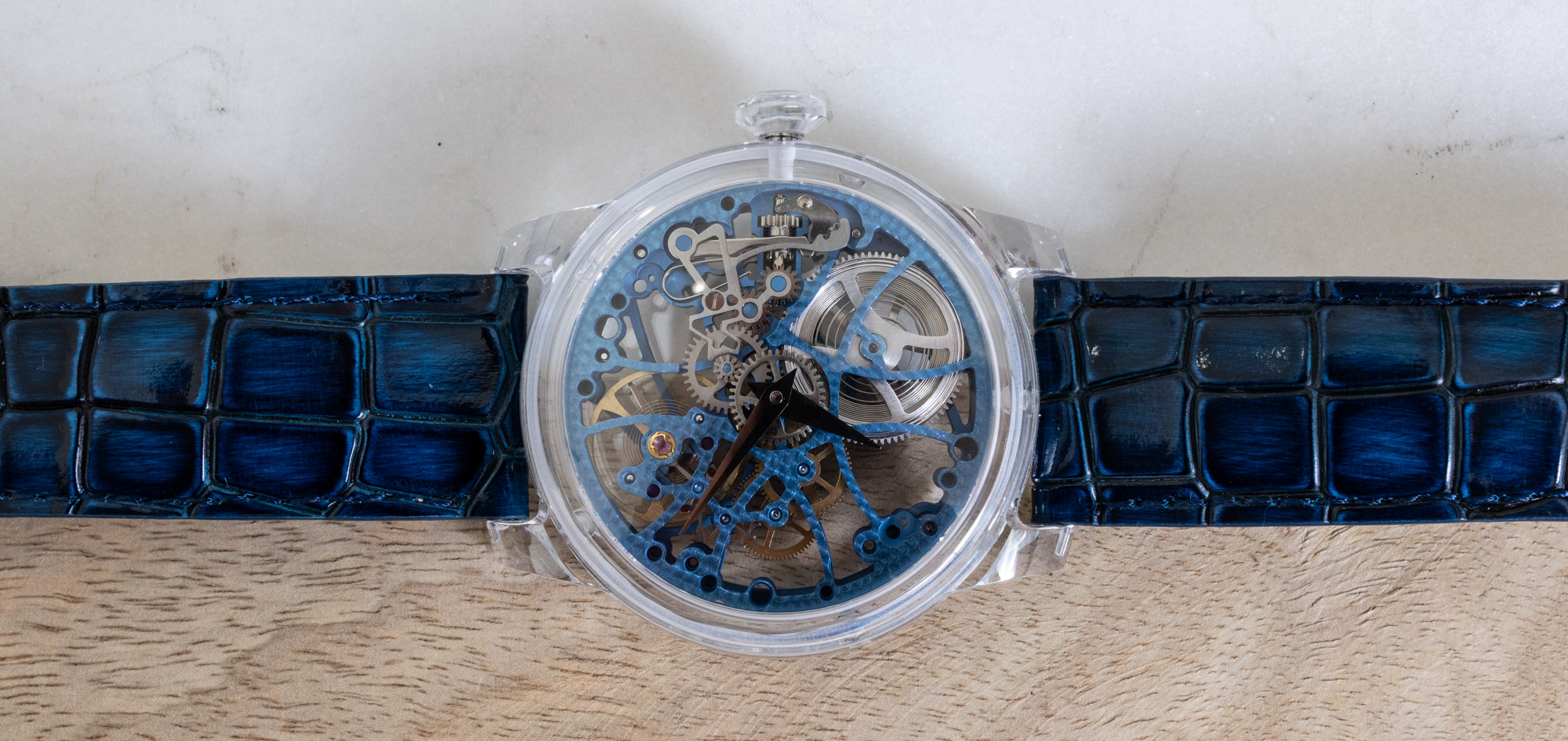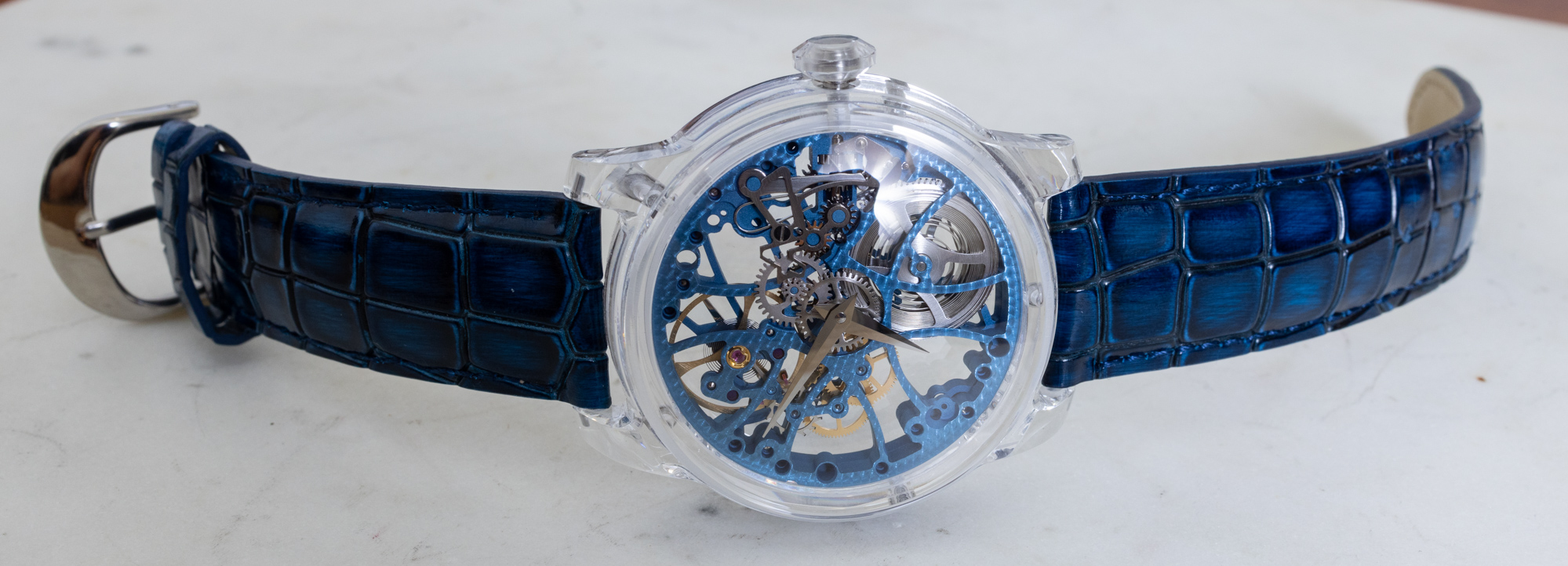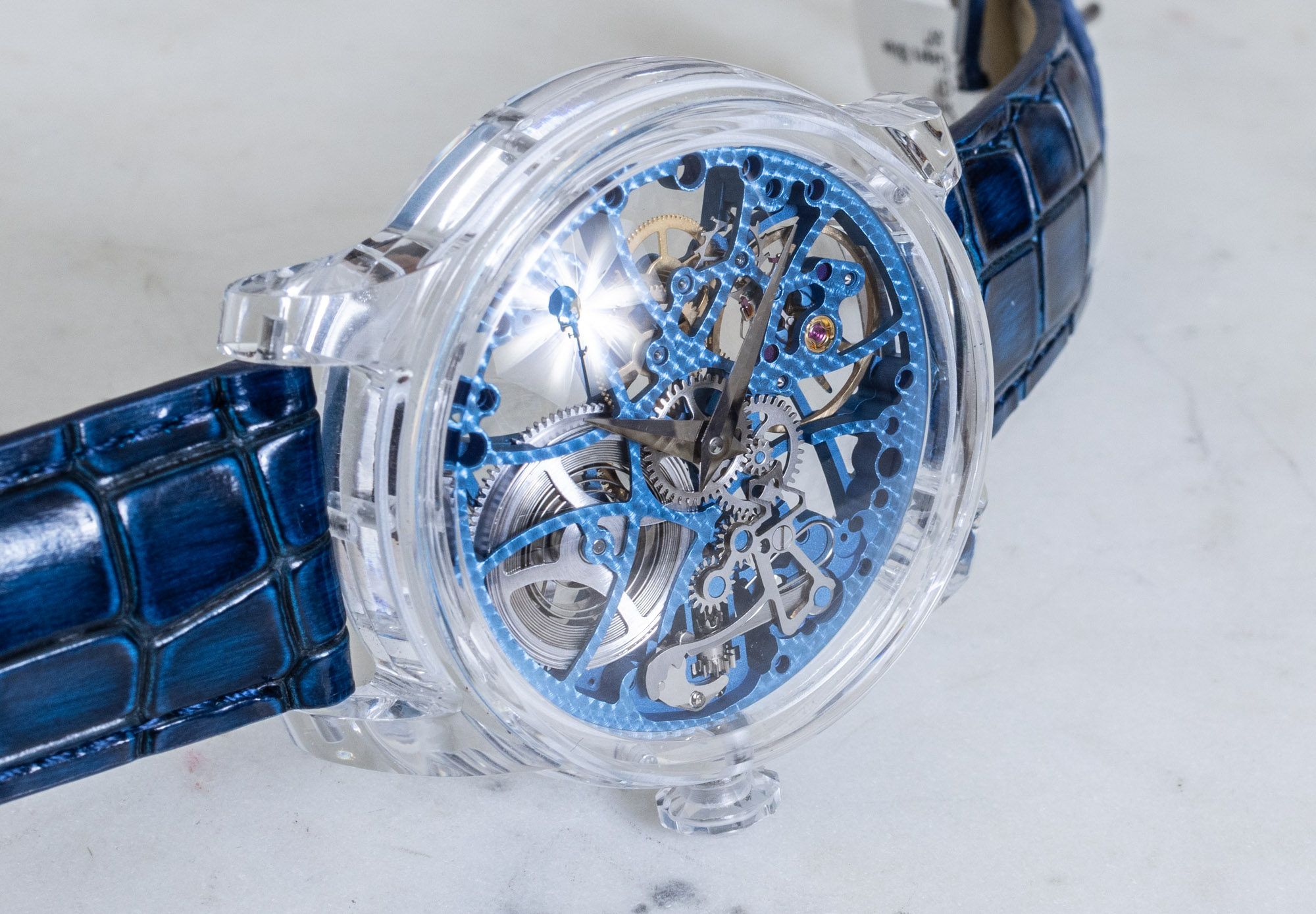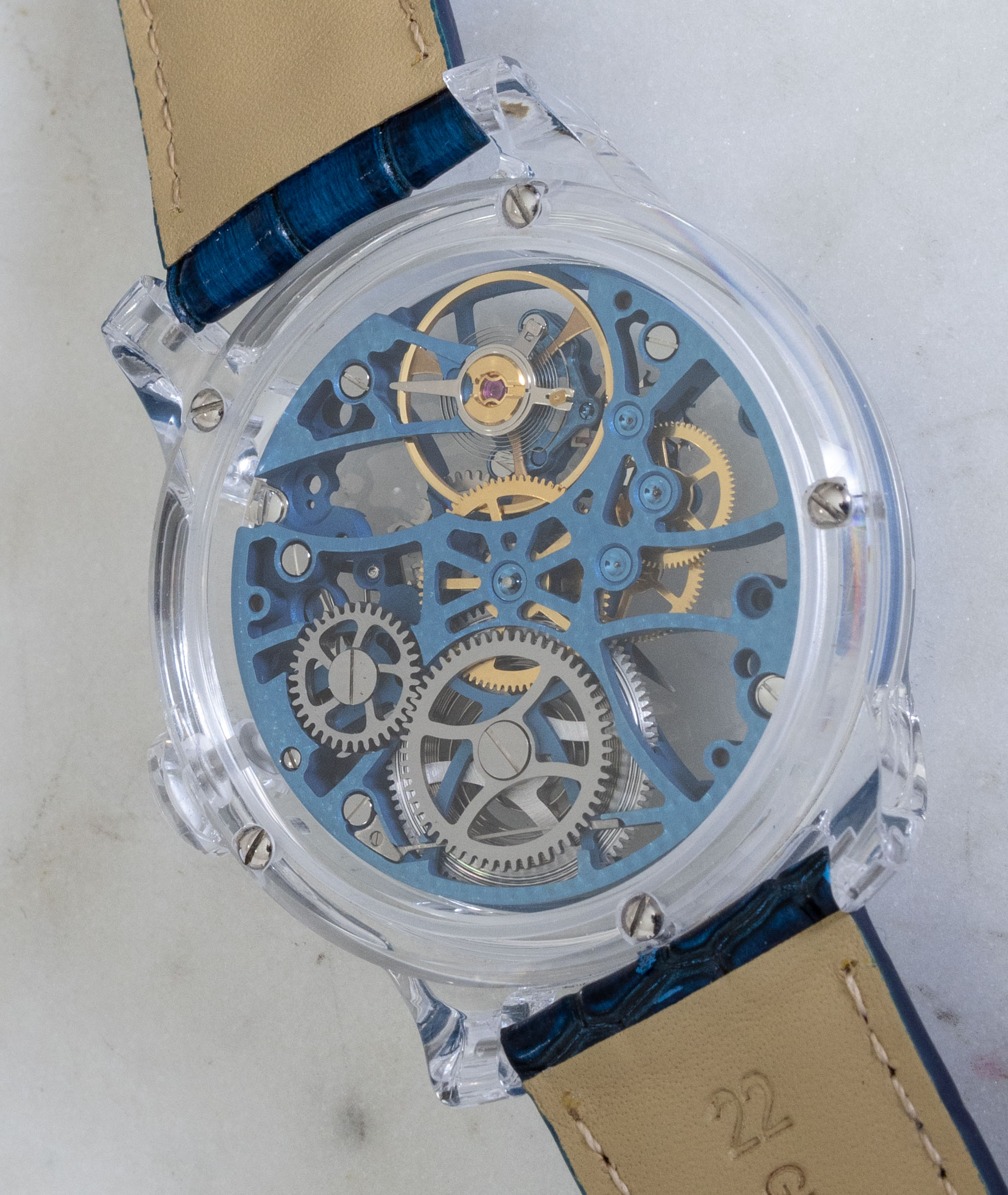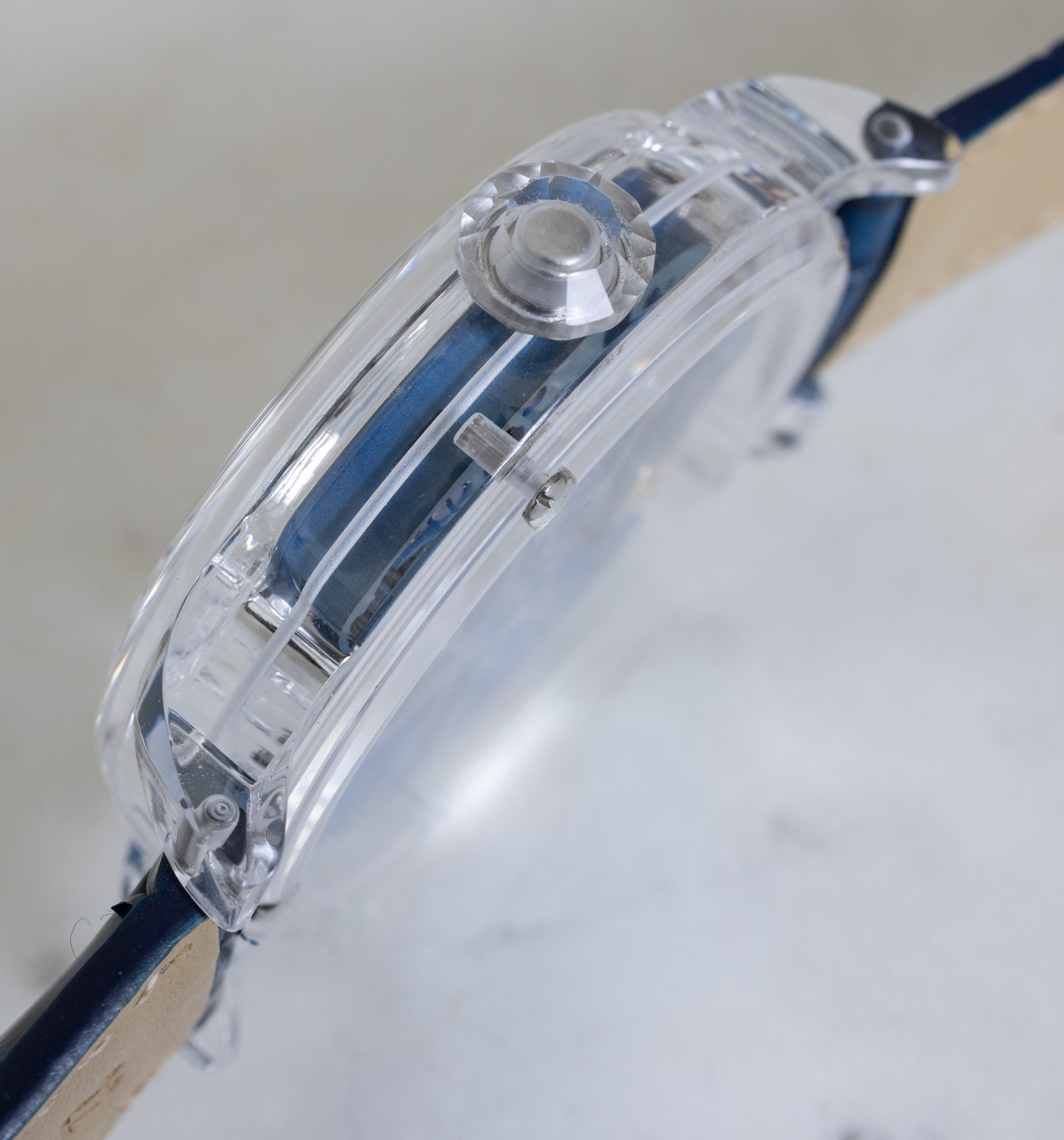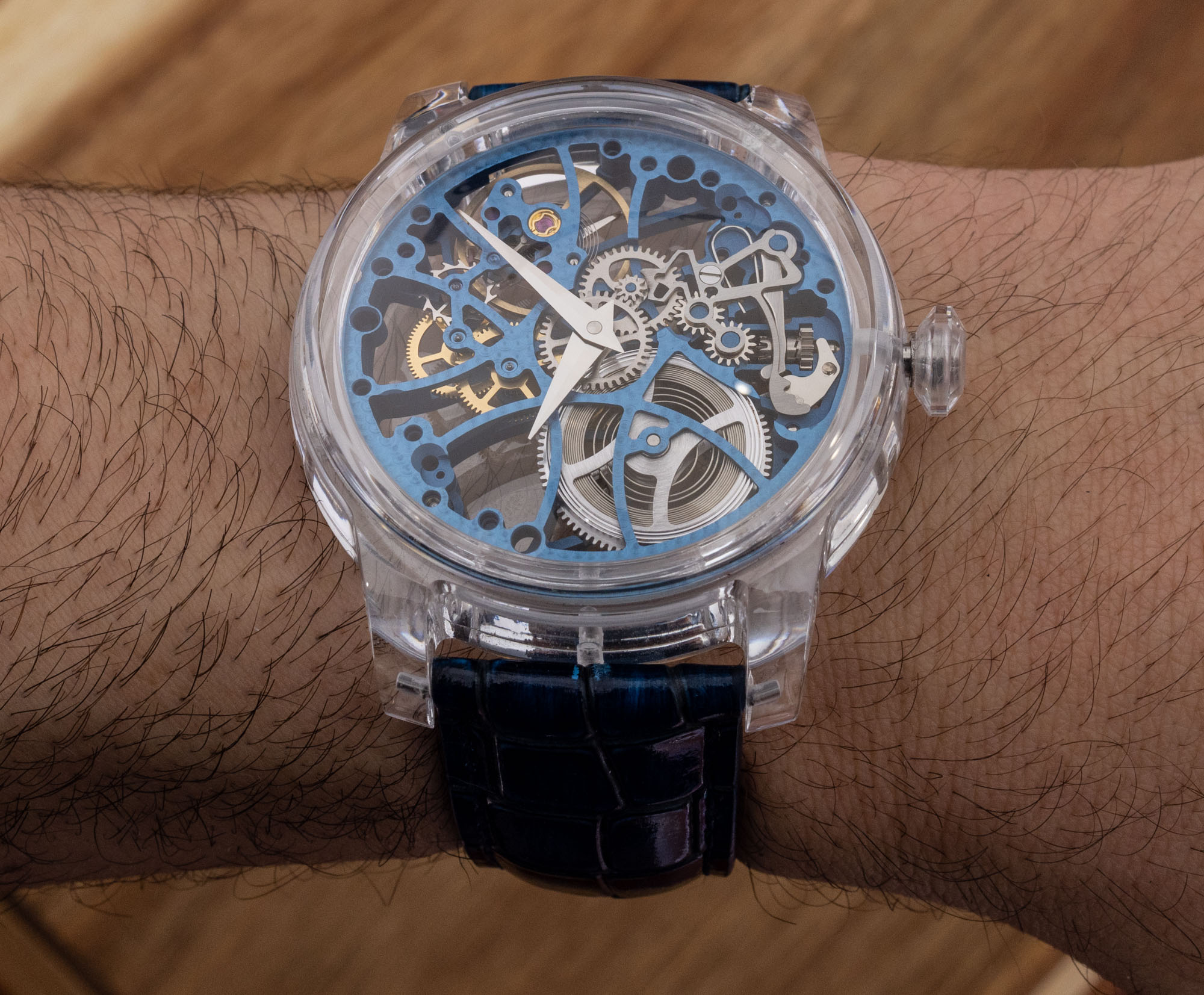
Watches with cases produced from synthetic sapphire are becoming increasingly popular, and for good reason. Sapphire has been used as a material for watch crystals since the 1980s, but only recently have modern machining techniques made it possible to cut and polish sapphire material into more complicated shapes like those needed for a watch case. Richard Mille started the sapphire case watch craze some years ago with a watch that cost over $1,000,000. Sapphire-cased watches were, for a time, an interesting high-end exotic novelty with a high price point to match. In 2016, Hublot started to get in on the sapphire crystal case game (for a few models) and, at the time, I reviewed a version of the Big Bang with a sapphire case that cost around $60,000. In 2022, sapphire case prices have come down even further, allowing for the highly scratch-resistant and transparent material to be used for an even wider array of timepieces. Today, I look at an Artya-branded watch known as the Wave Crystal, which costs just under $30,000 and has a full sapphire case.
Sapphire crystal watch cases come in a variety of colors, including entirely transparent cases such as this one. For a long time, it has been known how to color sapphire, and accordingly, we have sapphire cases out there with various color accents including blue, orange, green, purple, and more. Clear sapphire is probably the most versatile of the colors, and allows for the purest view of a watch’s innards. This is perhaps the greatest appeal of a sapphire case — that you can easily view the insides while those insides are still entirely protected. Note that this is an early version of the Wave watch, and retail models are going to be a bit different with better branding. This article includes some images of a similar but different Artya watch from the same collection which better demonstrates what the Artya branding is going to be in final production models.
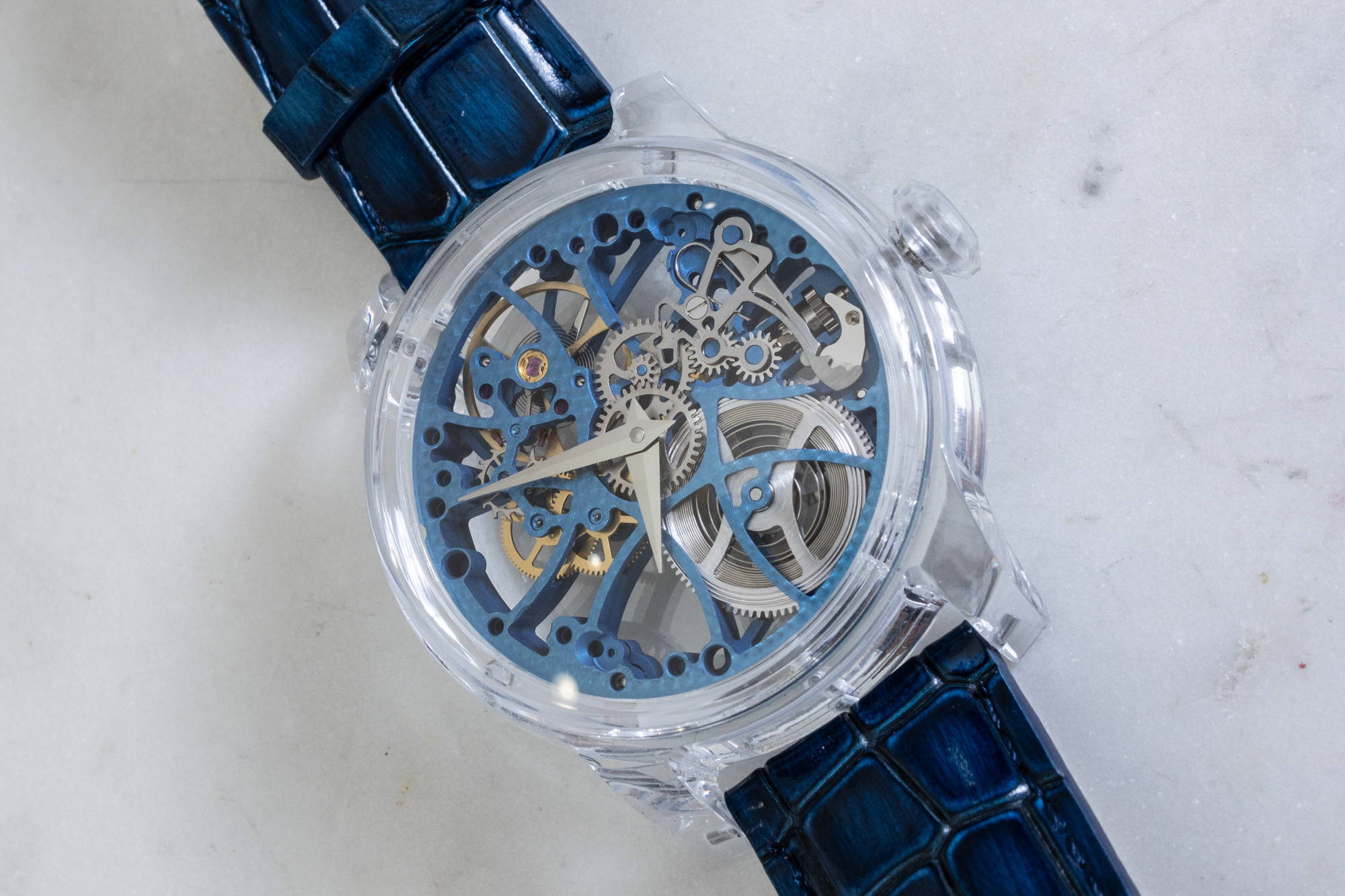
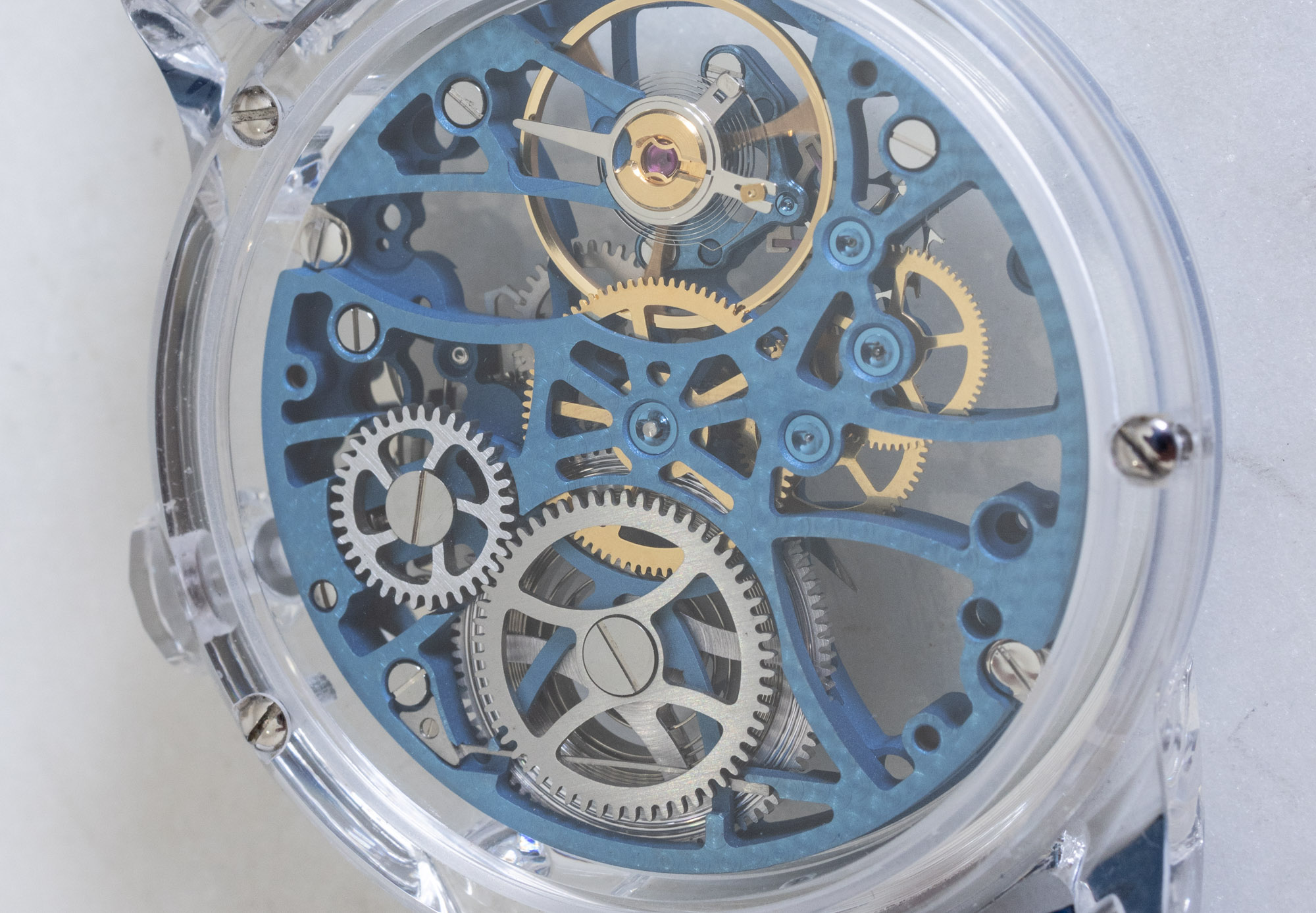
Sapphire is an extremely hard and scratch-resistant material, which is why it is favored in the area of watchmaking. Its weakness is in how difficult it is to machine (requiring special diamond cutting tools that wear out quickly and need to constantly be replaced), as well as in the fact that it can theoretically shatter if subjected to the right shock. Metal doesn’t do this, given that it bends and deforms before it would ever break apart. This more or less means that while a sapphire-cased watch will put up with wear and tear amazingly well, it isn’t a good idea to allow it to be dropped or smashed against a wall. It’s rare for a sapphire crystal case to break, but it can happen.
Artya is a Geneva-based watch brand run by the talented Mr. Yvan Arpa. He not only creates trends but also likes to find his own way of interpreting existing trends, which is exactly what he is doing here with products like the Wave Crystal collection. In fact, if you visit the Artya website right now, you’ll see at least three different sapphire-cased watches in the brand’s portfolio. This Wave Crystal (part of the “Son Of Gears” timepiece family) includes a manually wound skeletonized mechanical movement. The Purity collection uses the same case, but includes a more elevated tourbillon-based skeletonized movement. Perhaps the most interesting sapphire crystal watches Artya produces are versions of the brand’s new dive watch collection, probably the first on the market with classic vintage sports watch designs, albeit in a sapphire case.
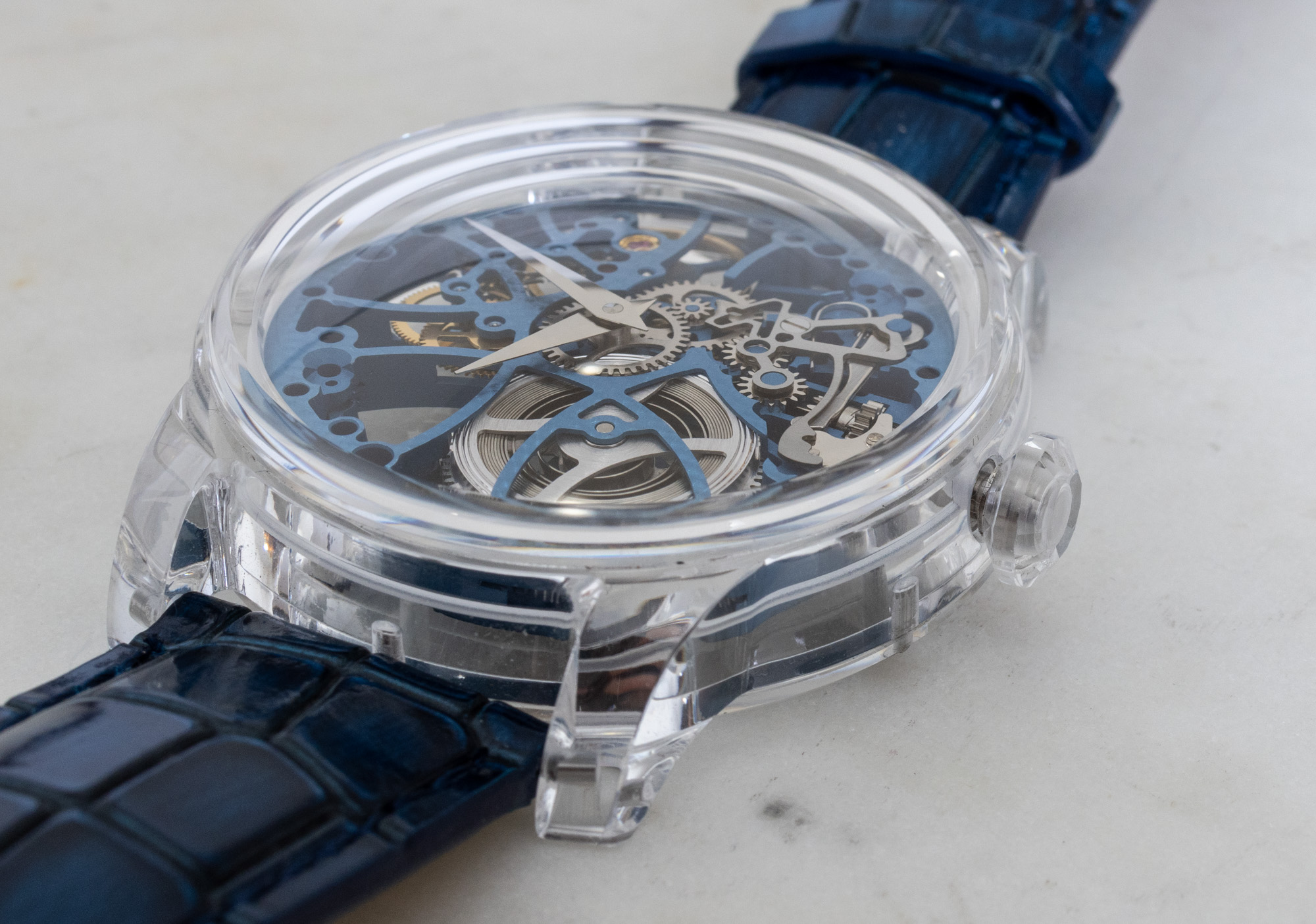
The sapphire case for the Wave Crystal watch is on the larger side at 46mm-wide despite its more classic visual design. The case is made of only two pieces, with the front sapphire crystal lens being integrated into the case design (naturally). The case is thoroughly AR-coated in order to reduce glare, which helps a lot. The case is also about 15mm-thick and has a lug-to-lug distance of about 53mm. It is water-resistant to 30 meters, which is about standard for sapphire-cased watches. Even Artya’s Diver Crystal watches only have a water resistance rating of 50 meters. Why? I think it has to do with the fact that, despite gaskets being used in the case, the sapphire pieces cannot be screwed together too tightly given the risk of the case cracking. So, for the time being, sapphire crystal cases are going to have comparatively less water resistance than a metal sports watch.
The Artya Wave Crystal case uses metal screws to hold it together, but I like that Artya decided to go with a sapphire crystal (versus metal) crown. Sapphire crystal is a wonderfully tactile material — smooth and pleasant to touch. I think this is one of the major differences between sapphire and plastic. A lot of people less familiar with sapphire watches bemoan that while you are spending lots of money on a transparent watch, the average person might believe that you are wearing something made from plastic. I can understand that sentiment, but there are a lot of differences between plastic and sapphire. For one thing, sapphire crystals will continue to look good long after a plastic crystal has scratched and clouded. Of course, there is also the tactile experience, which is very different between plastic and sapphire, with the latter offering the superior luxury experience by far. I’m a big fan of sapphire crystal watches, and while I wouldn’t wear one daily, I think that if you wanted to have one in your collection, it would bring a lot of joy to many people.
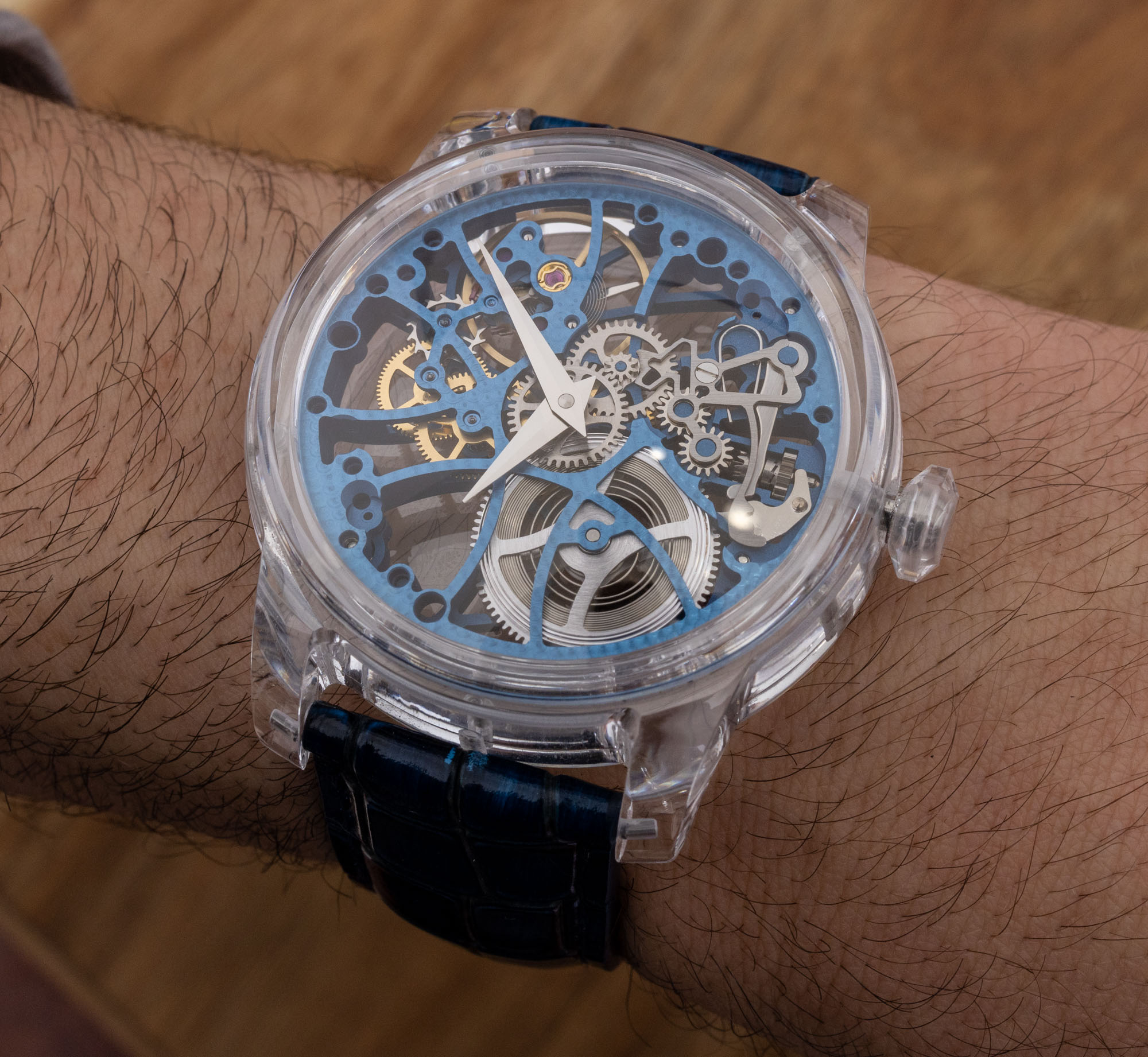
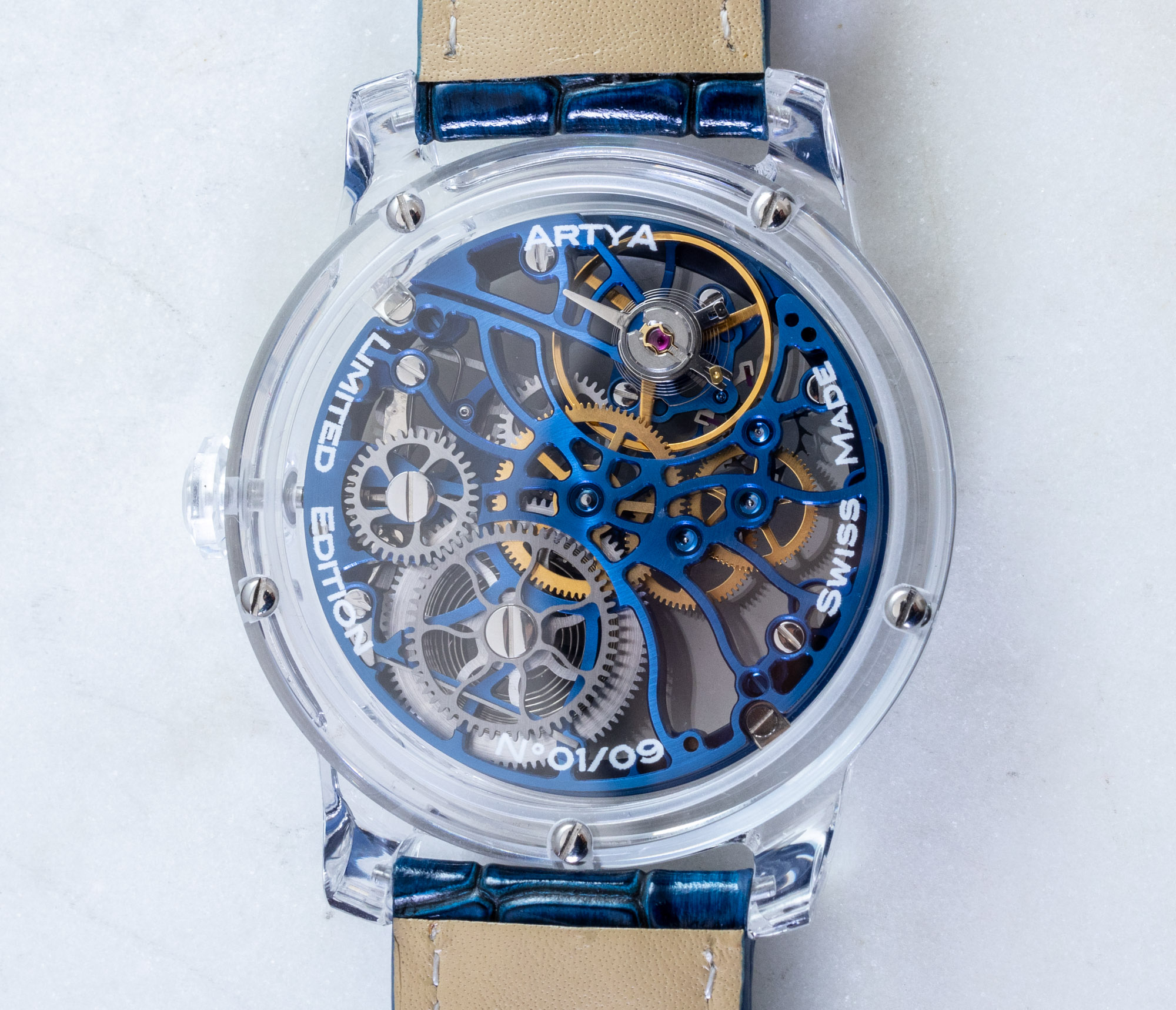
According to Artya, its Wave Crystal watches are all one-of-a-kind. The version on the Artya website is different from this model, in that it has a gray-colored movement with gold hands. This piece has blue-coated bridges for the movement and steel-toned hands. Artya calls the mechanism its “Artya Wave Skeleton Movement,” and it appears to have an architecture based on the UNITAS platform. Here the movement’s bridges are highly skeletonized with perlage polishing on most surfaces. The movement operates at 4Hz with about 50 hours of power reserve and, as mentioned, it is manually wound. Note the small “A” motif built into the movement bridges near the 2 o’clock position on the dial. The face otherwise offers just the time with hours and minutes. To display the time, Artya decided to go with polished dauphine-style hands. These are attractive, but they blend into the dial and also don’t have any special personality to lend to the overall composition. I believe that this watch would have been an even stronger design if Artya had decided to go with slightly more legible and distinctive hands for the Wave Crystal collection.
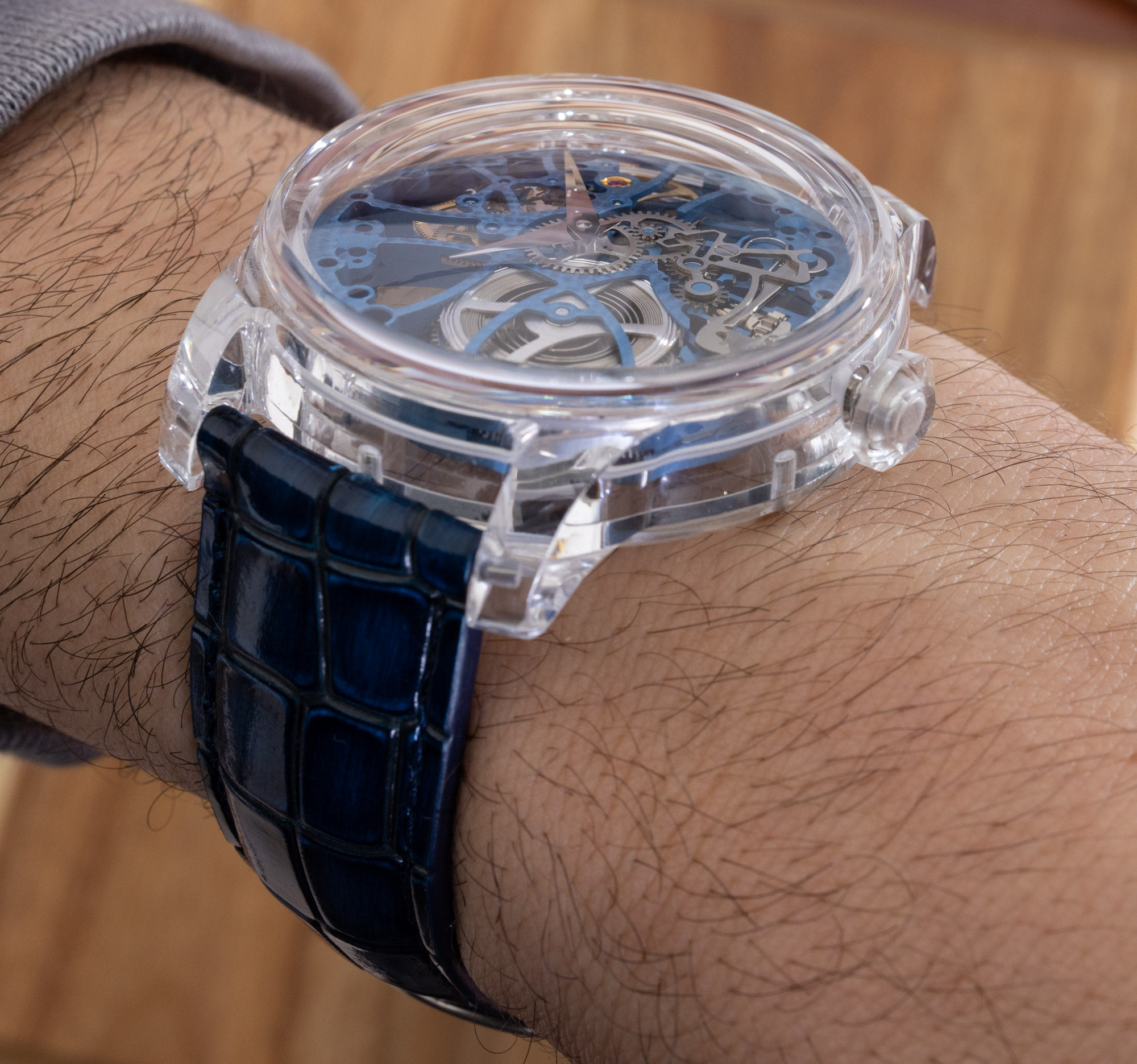
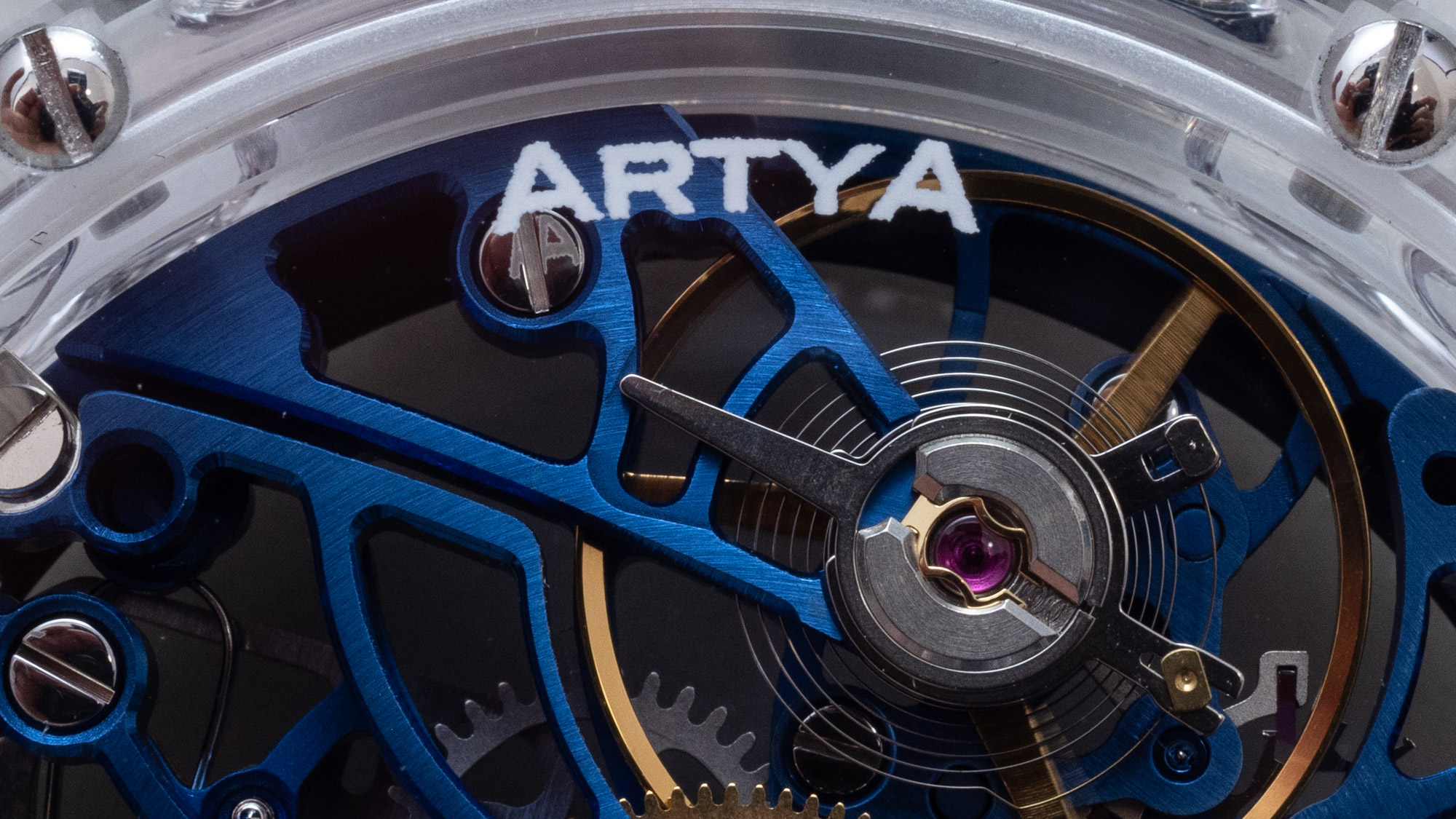
A note on branding: Aside from the above-mentioned “A” located discreetly in the movement, there is nothing else on this watch that identifies it as being from Artya, or any brand. Someone seeing this watch might come to the conclusion that it was put together via a fancy at-home kit (wouldn’t that be cool) or custom-made for one owner. I’ve pointed this out with other brands that, at times, forget to put enough information on watch cases and or dials. I mean it makes sense — the case can’t be easily engraved into, and the watch lacks a dial. When I talked to Artya about this they informed me that the watch they had given to me for review was in actuality a very early piece and that the Wave collection watches now sold have printing on the inside of the case in the rear with the necessary details. I have taken some pictures of a different model to show you what the text and branding on final versions will look like.
Attached to the case is a fitting glossy blue alligator strap that matches the blue colors of the movement, as well as the overall theme, pretty nicely. While the Wave Crystal watch is big, it is also fun and easy to wear, with the larger size intentionally acting to create a display piece as opposed to a more discreet timepiece-wearing experience. While it is unclear how many variations of the Wave Crystal watch Artya will produce, these are clearly niche watches that will be quite rare on the market. Price for the Artya Wave Crystal watch with the sapphire case is $28,900 USD. Learn more at the Artya website here.

